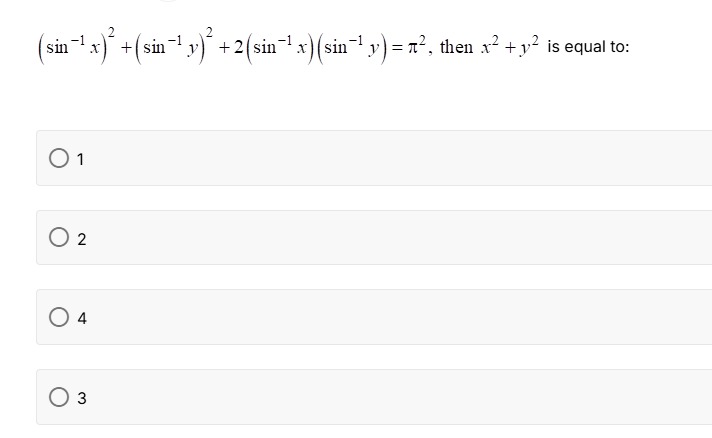Question
Question: $(\sin^{-1}x)^2+(\sin^{-1}y)^2+2(\sin^{-1}x)(\sin^{-1}y)=\pi^2$, then $x^2+y^2$ is equal to:...
(sin−1x)2+(sin−1y)2+2(sin−1x)(sin−1y)=π2, then x2+y2 is equal to:

A
0
B
2
C
4
D
None of these
Answer
2
Explanation
Solution
The given equation is (sin−1x)2+(sin−1y)2+2(sin−1x)(sin−1y)=π2. This can be rewritten as:
(sin−1x+sin−1y)2=π2
Taking the square root of both sides:
sin−1x+sin−1y=±π
Since the range of sin−1u is [−2π,2π], we have −2π≤sin−1x≤2π and −2π≤sin−1y≤2π. Thus, −π≤sin−1x+sin−1y≤π.
Case 1: sin−1x+sin−1y=π
This is only possible if sin−1x=2π and sin−1y=2π. Therefore, x=sin(2π)=1 and y=sin(2π)=1. In this case, x2+y2=12+12=2.
Case 2: sin−1x+sin−1y=−π
This is only possible if sin−1x=−2π and sin−1y=−2π. Therefore, x=sin(−2π)=−1 and y=sin(−2π)=−1. In this case, x2+y2=(−1)2+(−1)2=2.
In both cases, x2+y2=2.
